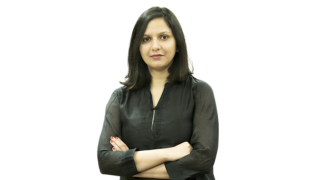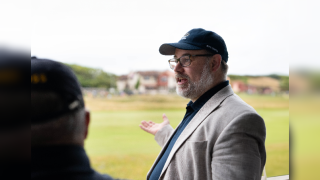FiberSense first came across the Capacity news desk when an announcement from serial entrepreneur Bevan Slattery appeared, confirming the launch of Soda, his new launchpad for investments in Australia’s digital infrastructure and sustainability.
As part of the Soda Ventures pillar, which invests in Australian tech entrepreneurs and high-growth businesses, was FiberSense, an Australian techco developing vibration detection and ranging sensor technology.
Speaking to founder and CEO, Mark Englund, he describes it as “the fusion of optical fibre sonar with optical fibre telecoms infrastructure”.
Leveraging his experience both in defence science and optical fibre telecoms, Englund saw the vast amounts of fibre in the ground and in the oceans around the world and saw an opportunity to do something new with it.
“The majority of that two point something billion route miles of cable can be converted into a continuous sensing fabric. In the world of sonar, we take for granted the ability to detect objects underwater acoustically, classifying and then tracking that object.”
The concept of FiberSense, therefore, is to bring those capabilities into cities with applications, effectively selling a service, not hardware.
“Principally, we set up to make cities safer, more secure, more efficient, more productive through being able to see all objects and events in real time,” says Englund.
“The sensing technology allows us to detect them and classify objects and events that are around the cables.”
This means that users are provided with visibility on who’s playing with the infrastructure, minimising excavation risk and improving network resilience. “Our mission is to go digitise in real time objects and events in cities,” says Englund.
In the event of network outages, such as those recently witnessed in France, FiberSense also enables “the rapid reconstitution of that capability, the ability to pinpoint the link outage and then definitively say ‘that’s a layer zero outage’, and then send someone to rapidly repair that,” explains Englund.
As a software service, clients benefit from not having to “go up the curb of what is a very sophisticated deep tech underneath the hood”, adds Englund, instead taking on services that can be turned on through cloud interfaces.
Making waves in subsea
With so many applications of FiberSense technology in terrestrial networks, it should come as no surprise that subsea is another sector where the company is also making waves.
Broken down into a few different categories, the first application is power. “There are a lot of subsea power cables and they are a different breed,” says Englund.
“They typically have dark fibre on them, so it’s relatively easy to insert the capability that we have on that.”
This isn’t the case for subsea telecoms cables, where “each of those fibre pairs is multi tens of millions, you don’t find dark fibres on those types of cables”, requiring FiberSense capabilities to be deployed spectrally.
According to Englund, 70% of the risk to subsea cables occurs at the shore end from things like anchor drags and fishing nets.
In the case of fishing nets, where they come across the cable they can snag it, drag it and break it. If fishing trawlers turn off their automatic identification system beacons the only way to track them is to use the beacons that are on the vessels and then check where it is relative to the cable to try and contact them.
Whether or not trawlers have their beacons on, “we still see them acoustically,” says Englund. “We can also identify the vessel acoustically. Once they hear that this system is up, the deterrence effect also kicks in.”
In addition, the FiberSense technology also creates visibility of where previously buried cables have been unearthed, due largely to sediment movement, enabling the client to re-bury that section or to post warnings to the maritime community that there’s a point that’s quite sensitive.
Another issue they aim to mitigate with their sensory technology is cable strumming. This is when a cable is inadvertently laid in a way that leads to it being suspended, effectively with a gap underneath it.
“It sits between two points like a guitar string, and with the current changing you can get some mechanical resonance effects; and that mechanical movement may look benign, but with months and months of that you get mechanical failures.”
Preparing for newer use cases
With all this work in protecting cables and real-time monitoring, you may struggle to see where FiberSense sits within the kind of ecosystem when preparing for the newer use cases, such as the metaverse and 5G and 6G. But that’s where Englund believes the conversation becomes most interesting.
“Somewhere between 2018 and 2019 we pioneered this capability where we were actually looking for vehicles moving along the road in real time,” he says.
“We have the ability to track vehicles moving down roads purely based on the acoustic signature associated with a tyre contacting the road. Once that was established, the proposition against all the other sensing technologies and all that tech is pretty dramatic.”
Being able to see in a two-dimensional grid where there is a total cover footprint – which FiberSense has entered into a few pilots for – is a capability for which autonomous vehicle companies, regulators, law enforcement, councils, planning offices and others have more than 30 use cases.
“Over the next 12 months we will be expanding into asset protection in cities, but the halo capability for us is mobility,” says Englund.
5G and technologies such as vehicle to vehicle or infrastructure to vehicle, all require specific equipment to be placed on the vehicle, whether that’s 5G transponders or other sophisticated telemetry in the vehicles.
“Our capability sits in a niche where it doesn’t matter what vehicle you have on the road, if it’s a physical vehicle, electric, petrol or autonomous, we will see it in the grid and be able to report its speed, acceleration, position, trip and weight,” says Englund.
Having been a part of the telecoms ecosystem for such a long time, Englund has witnessed the evolution of the industry, commenting: “The carriers are the poor country cousins to what’s going on in the OTT space.”
“By 2013, the whole link between the physical infrastructure you build and the high-value application was broken. It’s not zero but all the value now is in the content.”
FiberSense’s job now is to educate the carrier, and its fibre assets, which in a lot of cases are paired assets, should be separated out from the shinier aspects of the business and show them that the fibre infrastructure has a new use.
“Instead of being a dumb, commoditised pipe for other people’s data and other businesses data, you can now look at it as a high-value new source of data itself in partnership with us,” says Englund.
The most recent example of this was the deal signed between FiberSense and Vodafone Australia, which will see the two collaborate on a revenue share model.
“We’re working with Vodafone and they are co-selling these capabilities of asset protection,” says Englund.
“We have an earthquake early warning capability, we have water leak detection, we have geotechnical capabilities that now enables profiling of the ocean floor from the bedrock position to the soil type.”
One of the greatest USPs from this work is that FiberSense and the companies retain access and ownership of the data collected. “This drives the algorithmic performance that we’re achieving,” Englund says.
Now formally part of the Soda family, Englund praises long-time peer Slattery as “one of the earliest backers of our vision”, and someone who was prepared to open doors and provide much-needed credibility to the young start-up early on to best appeal to the carrier community.
“We have a solution that is compelling for them [carriers]. It’s a new, unregulated revenue source, not just this new capability that someone’s trying to sell you. Bevan has been very helpful in articulating that in the language of the industry,” he adds.
As the company continues to scale and expand its offerings, there are three main priorities for Englund over the next 12 months.
The first is to continue to build out its asset protection capabilities, “that’s more cities, more countries,” he says.
Next is to cultivate more fibre carrier partnerships, adding that “you’re going to see a lot of those from us over the next 12 months.” Lastly, he says it’s about developing “safer, more secure, more resilient network proof points”.
“That’s the tipping point for us,” he says, “creating carrier partnerships with these proof points, with technology that works, is going to make a big difference to the performance, resilience, uptime and maintenance of the existing infrastructure.”






